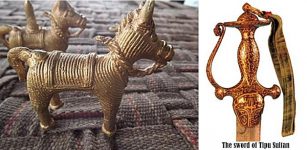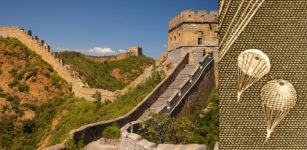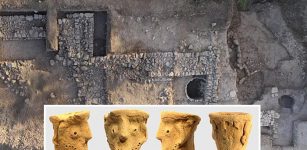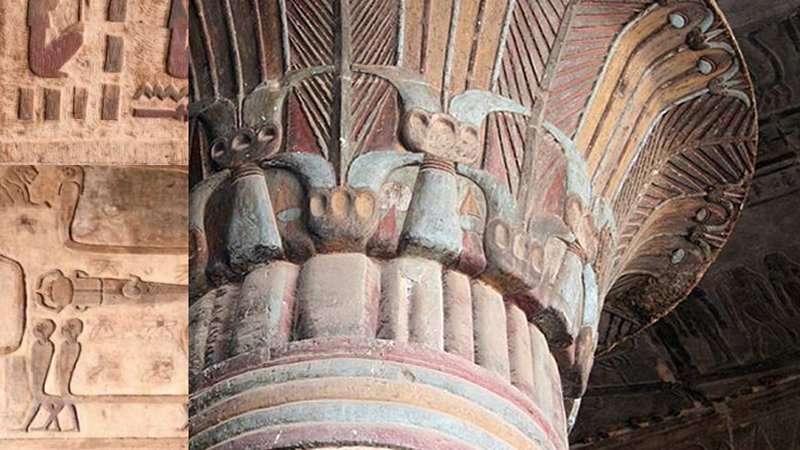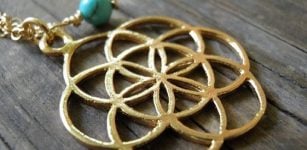Ostrich Eggshell Beads Were Social Currency For People Who Lived 33,000 Years Ago
Conny Waters – MessageToEagle.com – The University of Michigan researcher discovered pieces of jewelry in what is now Lesotho, an enclaved country within the border of South Africa.

Ostrich eggshell beads have been used to cement relationships in Africa for more than 30,000 years. Credit: John Klausmeyer, Yuchao Zhao and Brian Stewart
By measuring atoms in the beads, U-M paleolithic archeologist Brian Stewart and colleagues provide new evidence for where these beads were made, and just how long hunter-gatherers used them as a kind of social currency.
Apparently, human ancestors exchanged ostrich eggshell beads more than 33,000 years ago.
“Humans are just outlandishly social animals, and that goes back to these deep forces that selected for maximizing information, information that would have been useful for living in a hunter-gatherer society 30,000 years ago and earlier,” said Stewart, assistant professor of anthropology and assistant curator of the U-M Museum of Anthropological Archaeology.
“Ostrich eggshell beads and the jewelry made from them basically acted like Stone Age versions of Facebook or Twitter ‘likes,’ simultaneously affirming connections to exchange partners while alerting others to the status of those relationships.”
Anthropologists have long known that contemporary hunter-gatherers use ostrich eggshell beads to establish relationships with others. In Lesotho, archeologists began finding small ornaments made of ostrich eggshell. But ostriches don’t typically live in that environment, and the archeologists didn’t find evidence of those ornaments being made in that region — no fragments of unworked eggshell, or beads in various stages of production.
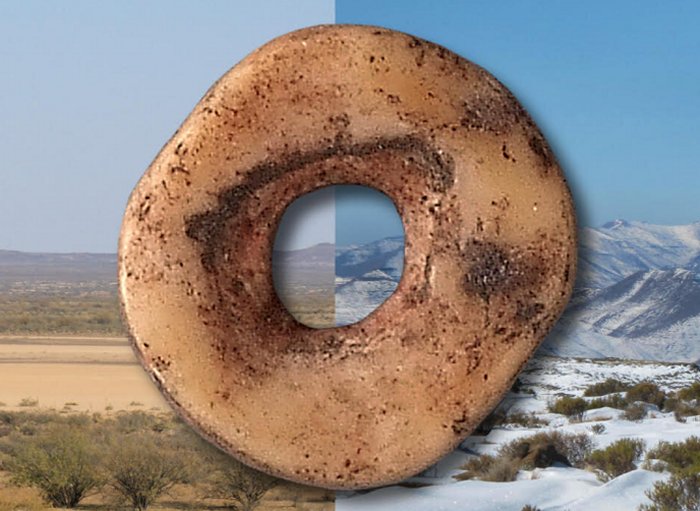
Ostrich eggshell beads have been used to cement relationships in Africa for more than 30,000 years. Credit: John Klausmeyer, Yuchao Zhao and Brian Stewart
So when archeologists began discovering eggshell beads without evidence of production, they suspected the beads arrived in Lesotho through these exchange networks.
Lesotho is roughly at the center of a bullseye-shaped geologic formation called the Karoo Supergroup. The supergroup’s mountainous center is basalt, from relatively recent volcanic eruptions that formed the highlands of Lesotho. Encircling Lesotho are bands of much older sedimentary rocks. The outermost ring of the formation ranges between 325 and 1,000 kilometers away from the Lesotho sites.
To assess where the ostrich eggshell beads were made, the research team established a baseline of strontium isotope ratios — that is, how much strontium is available in a given location — using vegetation and soil samples as well samples from modern rodent tooth enamel from museum specimens collected from across Lesotho and surrounding areas.
According to their analysis, nearly 80% of the beads the researchers found in Lesotho could not have originated from ostriches living near where the beads were found in highland Lesotho.
“These ornaments were consistently coming from very long distances,” Stewart said. “The oldest bead in our sample had the third-highest strontium isotope value, so it is also one of the most exotic.”
See also: More Archaeology News
Researchers found that some beads could not have come from closer than 325 kilometers from Lesotho, and may have been made as far as 1,000 kilometers away. It means that these beads were exchanged during a time of climactic upheaval, about 59 to 25 thousand years ago. Using these beads to establish relationships between hunter-gatherer groups ensured one group access to others’ resources when a region’s weather took a turn for the worse.
“What happened 50,000 years ago was that the climate was going through enormous swings, so it might be no coincidence that that’s exactly when you get this technology coming in,” Stewart said.
“These exchange networks could be used for information on resources, the condition of landscapes, of animals, plant foods, other people and perhaps marriage partners.”
Written by Conny Waters – MessageToEagle.com – AncientPages.com Staff Writer




